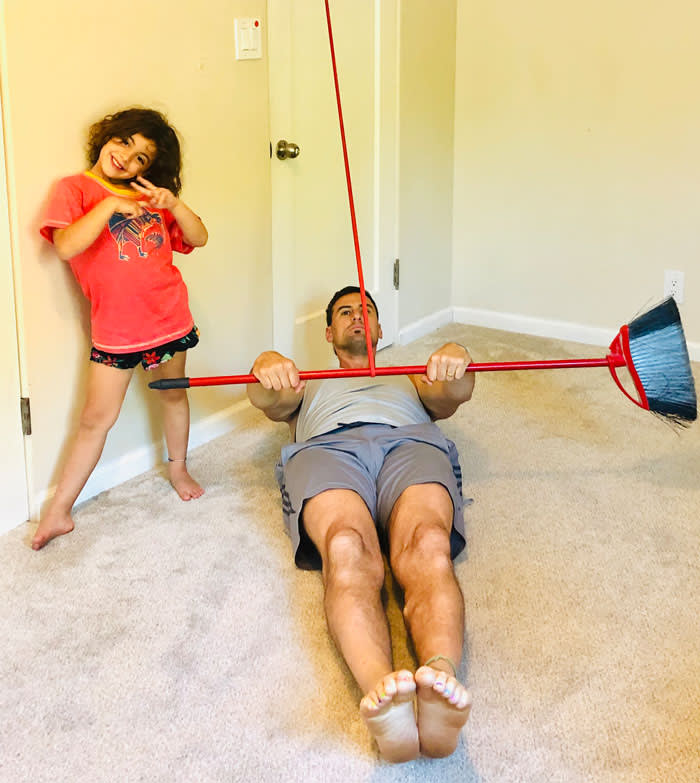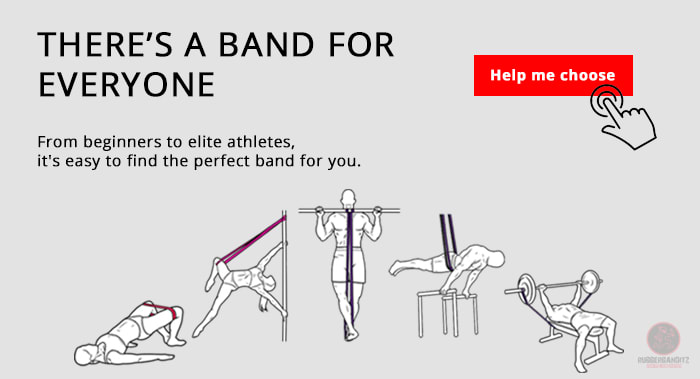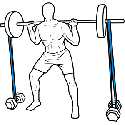Today I'm going to say a couple of dirty words and we can talk about them for a bit.
Front lever.
The front lever (along with maybe the planche and the one arm chin up) has to be one of the hardest calisthenics exercise skills to nail down. Some take years to get there and many drop off along the way. (So next time you see someone with a front lever, go give them a pat on the back (they train hard).
I feel like part of that is because nobody is sure exactly what to do to get there.
Should I hold tuck levers for 30 seconds and assume I'm strong enough? Should I use bands? Are bicep curls necessary? The questions that I get sometimes are all over the place. Let's narrow this down for you all.
The truth is it doesn't have to be that complicated, and yes, there are multiple ways to get to a front lever and these should be considered. Ultimately, when it comes to the range of things people can say will help your front lever, a general guiding principle should be:
"Is this similar enough to a front lever for me?"
Yes, we could do accessory exercises that are fairly different, but at the end of the day the fastest way to get better at the front lever is simple enough:
Do something as close to a front lever as possible more often than not, in a certain way and in certain amounts.
Let's take a closer look.
-------------------------------------------------------
Before we get into the particulars of the front lever, there are a few finer points that are worth covering.
The first that comes to mind is how to train for isometric strength.
Once again, there are many camps with many sets of beliefs here, but ultimately there are a few things most people would agree upon that can make this debate and dialogue much shorter-winded than it might be here.
- Everybody is different, and therefore different approaches will work for different people.
- More time is more time. If you can hold your front lever for more time than the previous session (assuming you aren’t cheating the position you are holding), you must have improved to some degree.
Beyond these, working front lever is working front lever. In your training, you should consider trying these few things and testing out what translates best to your improvements in whatever front lever variation you are currently at:
1. Front lever isometric holds

A front lever isometric hold is this - get into a position that resembles a front lever and hold that position for time. These are the most specific exercise you can do to improve upon your front lever. Full stop. Work in areas you can hold more than 4-seconds and less than 10-seconds to ensure you aren't doing something too easy or hard for your current level. Aim to make what is currently a 4-second hold a 10-second hold over a period of time, and then progress into a more challenging variation and repeat.
The obvious positive of training these guys is that they are as close to a front lever as we can train at any point in time, meaning we are creating adaptations most relevant to improving there.
The biggest drawback of this approach is that isometrics create little muscle growth as they do not move through much range, and the more muscle we have to innervate (and the more responsive it is), the more muscle we can use to lever ourselves.
2. Front lever pull variations

A front lever pull is where one begins in a hang and pulls themselves into a front lever-esque position. Generally, these begin with tuck front lever pulls, where a person holds a hanging N-sit and uses straight arm strength to pull themselves into a tuck front lever position, before returning to the hanging position. These are great to implement into front lever training primarily for the reason mentioned above. Front lever training's most specific route is to train front levers isometrically, and isometric isn’t the most direct way to build muscle due to their lack of range of motion.
Front lever pulls, however, have a large range of motion AND pass through various positions as you are practicing pulling yourself up parallel to the ground. This range of motion also builds hypertrophy in the muscles that are relevant to building a strong front lever.
Obviously, in this case, the front lever pulls are less specific than holds, but the hypertrophy is a welcome trade-off for the loss in specificity. Therefore, a good exercise to use, especially if we don't have much in the way of lats, scaps, rhomboids, and biceps when we begin training.
It is also worth trying these with a resistance band looped around the underside of your knees if you are a complete beginner to begin understanding the movement, as they will become a staple of your training as you develop.
3. Banded front lever variations



While holds and pulls are done at whatever level you can manage, using resistance bands for front levers allows you to learn about positions you can't currently access while helping you stabilize your core and focus on maintaining a hollow body.
Banded levers can either work by anchoring the band around your feet as you hold a full front lever position or by you sliding the band underneath your hamstrings and shortening ‘your body levers’ you are activating while you hold the front lever. In both cases, the deloaded position allows you time to understand the more challenging positions which you are striving for, giving you a glimpse into the future in a manageable way.
While strength is clearly required for whatever front lever variation we want, these movements are also acquired skills that result from mind-muscle learning control and have a technical element to them. Undeniably, there are plenty of people strong enough to front lever that cannot because they have never practiced the skill directly.
With this in mind, you might not be able to straddle front lever or front lever yet BUT to skip practicing the technique with the assistance of a band would be poor planning. Practicing technique will allow you to be as efficient as possible and make progressions while maintaining proper form, given your current strength capabilities.
Admittedly, building isometric strength should contribute to the majority of the strength and muscle mass needed to perform the movement. The same calisthenics bands are also similarly used for training other keystone bodyweight exercises such as the planche, muscle-up, back lever, L-sit, and assisted pullups.
4. Miscellaneous

Other things that deserve mention but have not been given it yet are general muscle building approaches and eccentrics.
Muscle building bodyweight training exercises like face pulls, bicep curls, and the likes are definitely helpful in building a front lever. They create more muscle for you to use in your levers which is helpful until you are too heavy for it to be useful. That being said though, people either tend to overemphasize these elements or forget them completely in their programming. Neither of these is what you want.
Generally, these exercises feature last in your programming and don't need more than 3 set of concerted work to do their job. Think of these exercises as shading in the little gaps you might have missed in your specific training. Shading might not be necessary for a front lever but will make you strong and durable in ways that are definitely helpful.
As for eccentrics - many use these to get front levers. They aren't a bad way to do it, but once again, people tend to program way too many sets and reps of these into their week. Eccentrics create A LOT of muscle damage, meaning that too much of these quickly become an issue. That is why these end up being an afterthought in this article- because more than a few reps per session quite often end up putting people backward rather than forward.
For those of you listening in at home, an eccentric front lever begins in an upside down position with you holding the front lever shape you are currently aiming to train or improve. The eccentric refers to you lowering in a controlled manner while maintaining that same position on the way to back down to a hanging position. Think negative front lever.
Eccentrics are good because they allow you to feel the tension you need to sustain a position when you are aiming at holding it. The speed of the eccentric also tells you just how close you are to holding the position isometrically (being still at a given position).
Now that we have the puzzle pieces, we have to assemble the puzzle. The truth here is that frequency, intensity and volume are still factors that change person to person, but ultimately you wouldn't want to exceed:
More than 3 sessions per week
More than 25 sets of total work spread across these sessions
A healthy mix of each of these categories is probably worthwhile, making sure that each session has a different focus with regards to the work being done.
For example, if we choose to do 3 sessions per week with 8 sets of volume in each, we might have one day with a focus on isometrics (4 sets), with 2 sets dedicated to front lever pulls and 2 sets dedicated to banded work, along with a couple of sets of accessory work to help us along. This would look like:
4 sets: Front lever hold (challenging position, unable to hold for longer than 10s on the first set)
2 sets: Moderate intensity front lever pulls
2 sets: Banded front lever at a more challenging variation
2 sets: Face Pulls
2 sets: Biceps Curls
Then, on day 2 and 3, we would shift the focus to something different. We might do 4 sets of pulls or eccentrics or banded work, with less intense secondary sets on what we missed.
Curious which bodyweight training calisthenics bands would be best for you?
Another thing to note is that if you tend to improve faster on front lever isometrics than you do on front lever pulls these might be worth spending more time on proportionally because they are providing you with the results.
Keep it well rounded enough to ensure there aren't too many gaps, trust in consistent work and you'll be fine.



